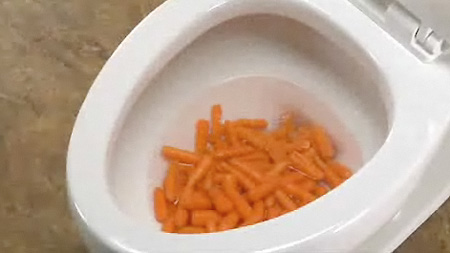Is it Feasible to Dispose of Food Waste in the Toilet?
Is it Feasible to Dispose of Food Waste in the Toilet?
Blog Article
Just how do you actually feel on the subject of Is it safe to flush food (especially rice) down the toilet??

Introduction
Many people are usually confronted with the dilemma of what to do with food waste, particularly when it concerns leftovers or scraps. One common question that arises is whether it's okay to flush food down the bathroom. In this post, we'll look into the reasons that individuals might take into consideration flushing food, the consequences of doing so, and alternative techniques for proper disposal.
Reasons that people might take into consideration flushing food
Absence of recognition
Some people might not be aware of the prospective harm caused by purging food down the commode. They might wrongly believe that it's a harmless practice.
Comfort
Purging food down the bathroom might feel like a quick and simple remedy to throwing away undesirable scraps, specifically when there's no close-by garbage can offered.
Idleness
In some cases, individuals may simply select to flush food out of large laziness, without considering the consequences of their actions.
Consequences of flushing food down the commode
Environmental influence
Food waste that winds up in rivers can contribute to air pollution and harm marine communities. Additionally, the water used to purge food can strain water sources.
Pipes concerns
Purging food can bring about clogged pipelines and drains pipes, causing pricey pipes fixings and hassles.
Types of food that ought to not be flushed
Coarse foods
Foods with coarse structures such as celery or corn husks can get tangled in pipes and cause blockages.
Starchy foods
Starchy foods like pasta and rice can absorb water and swell, leading to obstructions in pipelines.
Oils and fats
Greasy foods like bacon or food preparation oils must never be purged down the toilet as they can strengthen and trigger obstructions.
Correct disposal approaches for food waste
Making use of a waste disposal unit
For homes outfitted with garbage disposals, food scraps can be ground up and purged through the pipes system. Nevertheless, not all foods are suitable for disposal in this way.
Recycling
Particular food product packaging products can be reused, minimizing waste and decreasing environmental effect.
Composting
Composting is an eco-friendly method to throw away food waste. Organic products can be composted and utilized to enhance dirt for gardening.
The value of correct waste monitoring
Reducing environmental injury
Proper waste management practices, such as composting and recycling, assistance lessen air pollution and protect natural deposits for future generations.
Safeguarding pipes systems
By staying clear of the practice of flushing food down the commode, house owners can prevent costly pipes repairs and maintain the honesty of their pipes systems.
Final thought
In conclusion, while it might be tempting to flush food down the bathroom for benefit, it is very important to comprehend the prospective repercussions of this activity. By taking on proper waste administration practices and throwing away food waste properly, people can contribute to healthier plumbing systems and a cleaner atmosphere for all.
FLUSH FOOD DOWN THE TOILET?
FLUSHING FOOD CAN CAUSE BLOCKED DRAINS IN YOUR HOME
All of the plumbing fixtures in your home are connected to the same sewer pipe outside of your home. This outdoor sewer pipe is responsible for transporting all the wastewater from your home to the Council sewer mains. Even small pieces of food that go down the kitchen sink can cause problems for your sewer. It should therefore be obvious that flushing larger bits of food, such as meat, risks a clog in either the toilet itself or the sewer pipes. Flushing greasy food is even more problematic because oil coagulates when it cools, coating the interior lining of your pipes.
THE TOILET IS NOT A BIN
Food isn’t the only thing that people shouldn’t be flushing down the toilet. People use the toilet to dispose of all kinds of things such as tampons, makeup wipes, dental floss, kitty litter and even underwear. Water goes to great lengths to educate residents about the high costs and stress placed on wastewater treatment systems simply from people flushing the wrong stuff down the toilet. It costs taxpayers millions of dollars each year, and homeowners thousands in blocked drain repairs.
FLUSHING FOOD IS A WASTE OF WATER
Flushing food is a waste of our most precious resource - water. In June this year Level 1 water restrictions were introduced to protect water supply from drought conditions. Much of New South Wales continues to be affected by prolonged drought with recent figures revealing up to 97 per cent of the state remains in drought. Depending on whether you have a single or dual flush toilet, every single flush uses between five and 11 litres of water. In the current climate this is a huge amount of water to be wasting on flushing food that should be placed in the bin (or better yet, the compost).
https://www.jabplumbingsolutions.com.au/blog/can-you-flush-food-down-the-toilet

I came across that entry about while perusing the internet. Feel free to pause to promote this blog posting if you enjoyed reading it. I love reading our article about Think Twice Before Flushing Food Down Your Toilet.
Call Today Report this page